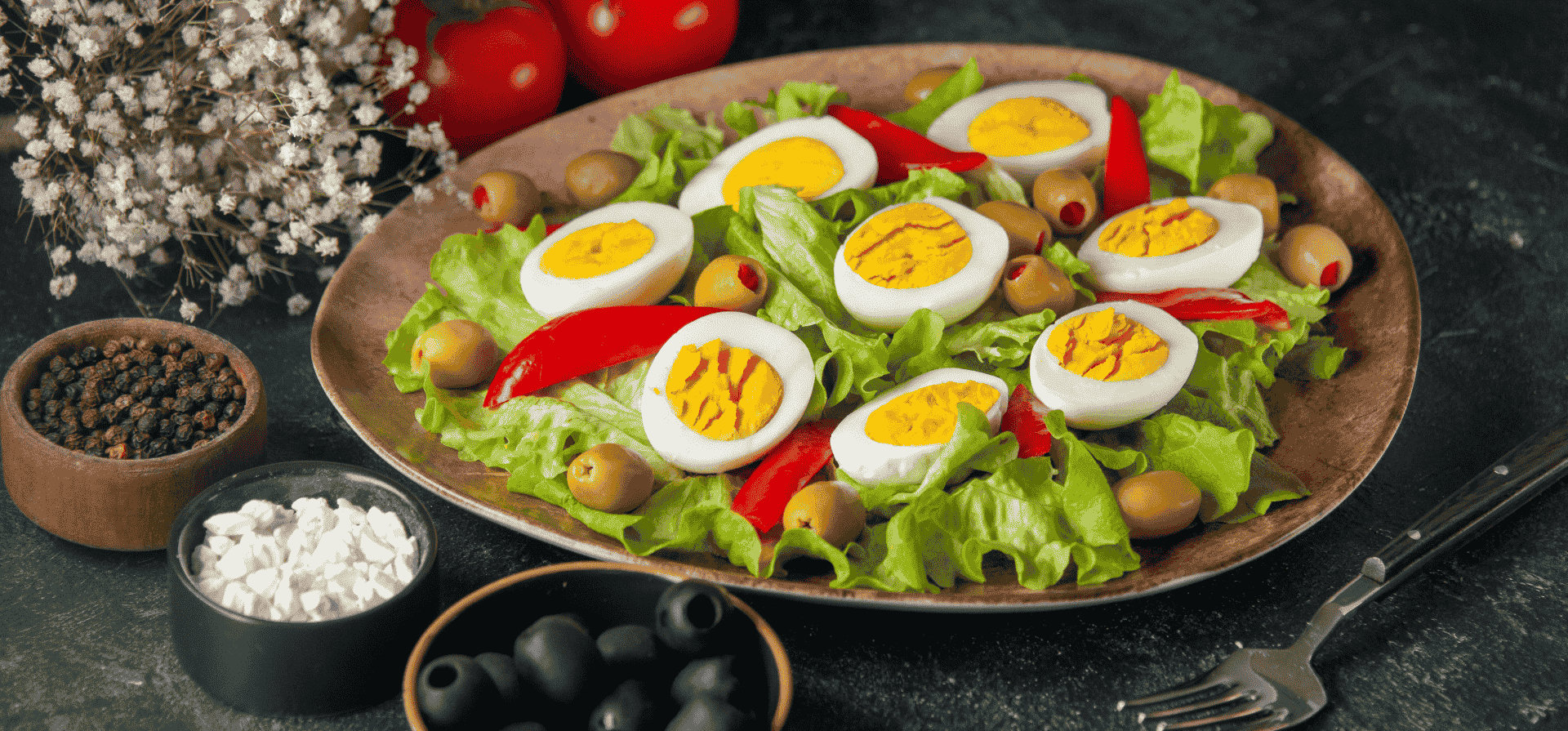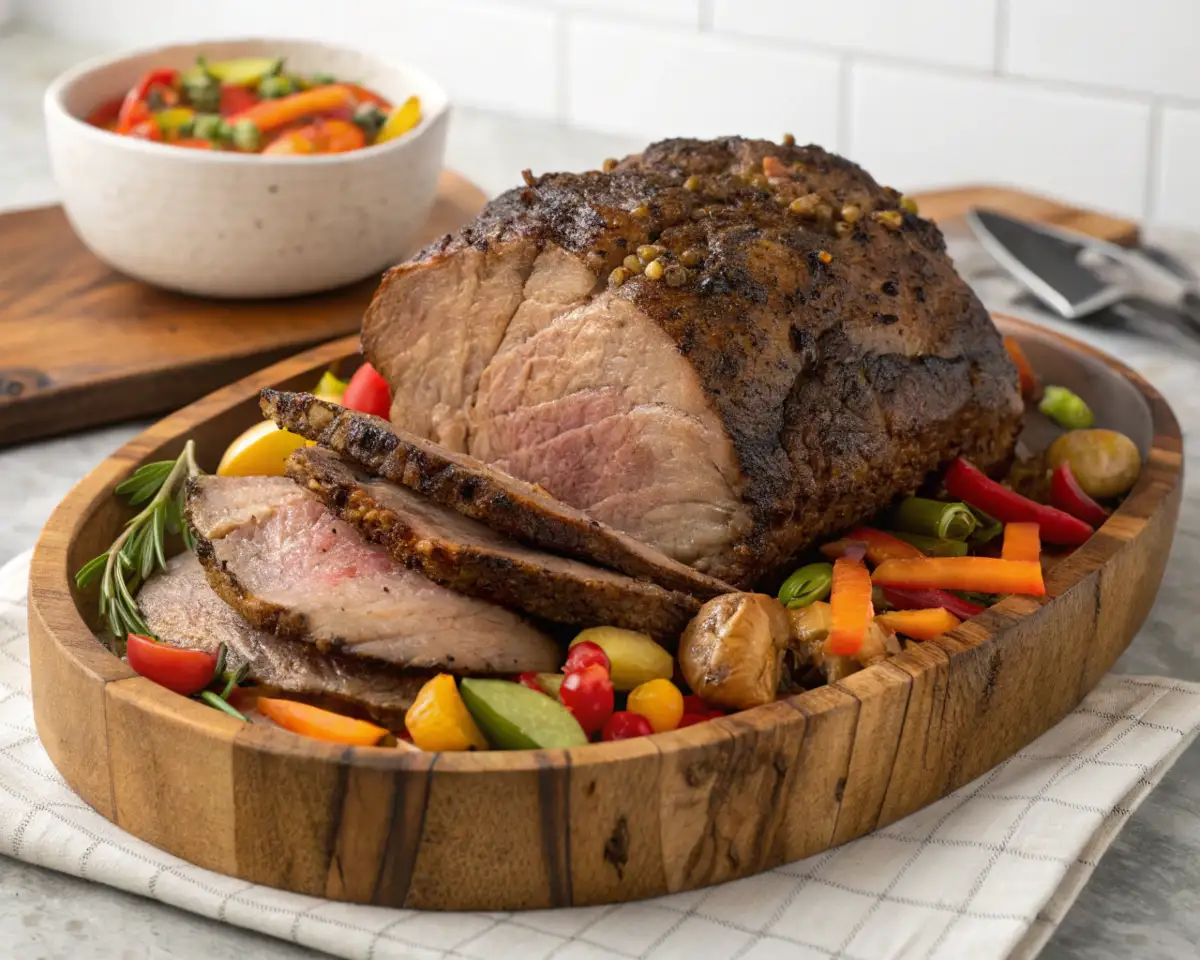IntroductionMastering Beef Shoulder roast : The Best Recipes and Cooking Techniques
If you’re looking to create a tender, flavorful roast that will impress family and friends, look no further than the beef shoulder roast. Whether you’re preparing a special dinner or just want a hearty meal for the week, this cut of meat offers unmatched versatility. From slow cooking to grilling, we’ll walk you through everything you need to know about cooking the perfect beef shoulder roast, how to choose the best cut, and even share some recipes to get you started. Let’s dive into the world of beef shoulder roast and explore why it should be your go-to cut for a delicious meal!
What is Beef Shoulder Roast?
Before diving into the best cooking methods and recipes, it’s important to understand what exactly a beef shoulder roast is and how it differs from other cuts of beef. This foundational knowledge will help you make the best choices for preparing your roast, ensuring a juicy, tender result every time.
What is Beef Shoulder Roast?
A beef shoulder roast is a cut of meat taken from the shoulder area of the cow. This region is heavily exercised, which means the meat can be tough if not cooked properly. However, when prepared the right way, it becomes incredibly flavorful and tender. It’s a perfect choice for slow cooking, roasting, or braising, as the connective tissue and marbling break down over time, making the meat melt-in-your-mouth tender. This roast is often used for dishes like pot roast, roast beef, or even shredded beef for tacos.
Beef Shoulder vs. Chuck Roast
While a beef shoulder roast and a chuck roast come from similar parts of the cow, they aren’t the same. The shoulder roast is often leaner than the chuck roast, which tends to have a higher fat content. This makes the shoulder roast a great option if you’re looking for a slightly leaner alternative, but it still offers plenty of flavor and juiciness. Whether you choose a beef shoulder roast or a chuck roast ultimately depends on your preference for fat and texture.
Best Methods for Cooking Beef Shoulder Roast
When it comes to cooking beef shoulder roast, there are a few methods you can choose from, each offering unique flavors and textures. Whether you prefer the ease of a slow cooker or the crispiness from the oven, understanding the best ways to cook this cut will help you achieve mouthwatering results every time.
Slow Cooker vs. Oven Roasting
One of the best methods for preparing a beef shoulder roast is by slow cooking. A slow cooker works wonders, as it allows the meat to cook slowly at a low temperature, breaking down the tough fibers and making the roast incredibly tender. Simply season the roast with your choice of spices, add a bit of broth or wine for moisture, and let the slow cooker do the work. This method is especially ideal for creating a rich pot roast or beef stew.
Alternatively, oven roasting is another excellent choice. When you roast the beef shoulder roast in the oven, you get a beautifully browned crust while maintaining the tenderness inside. For best results, sear the roast in a hot pan before placing it in the oven. This will help lock in the flavors, and the oven’s dry heat will create a flavorful crust while keeping the meat juicy. Oven roasting requires a bit more hands-on attention, but it delivers a delicious, satisfying meal.
Grilling Beef Shoulder Roast
Grilling a beef shoulder roast is another exciting option, especially if you enjoy the smoky flavors of outdoor cooking. While this method takes more time and patience, it can be a fantastic way to infuse your roast with a deep, charred flavor. Use a low-and-slow indirect grilling technique to prevent the meat from drying out. Consider marinating your roast overnight with your favorite seasoning or marinade, as this will enhance the taste and tenderness of the meat. You can also finish it with a glaze or BBQ sauce for extra flavor.
Beef Shoulder Roast Recipes for Every Occasion
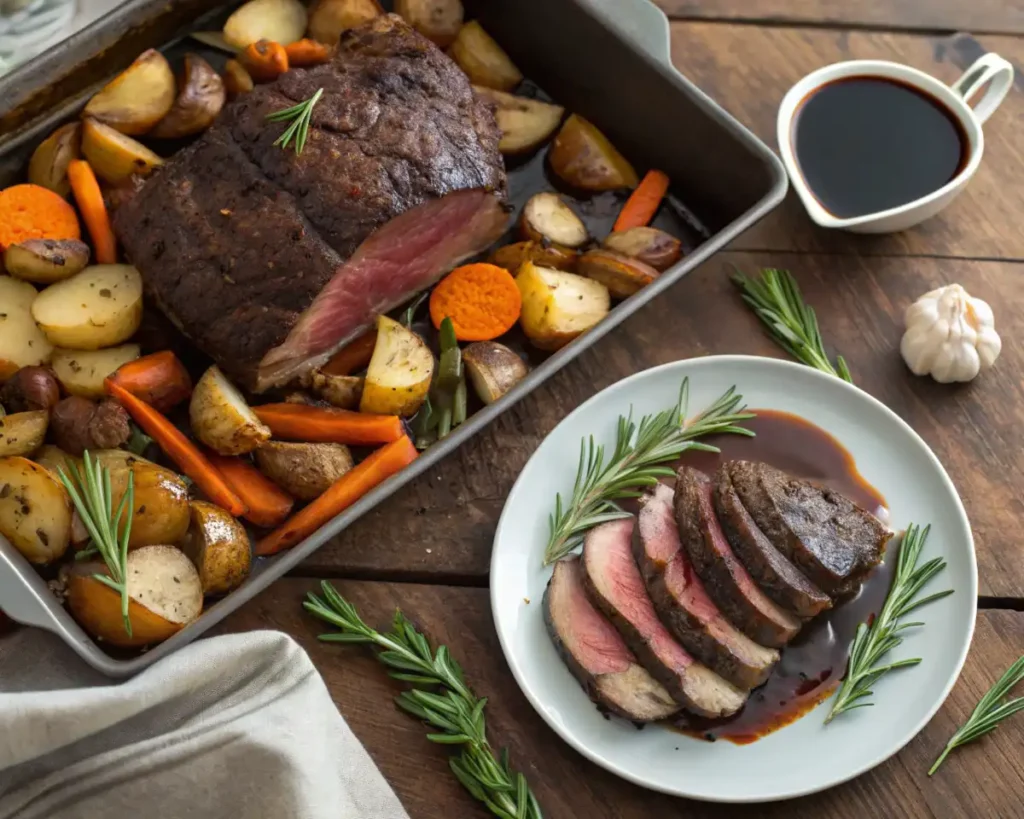
Now that you know the best cooking methods, let’s explore some beef shoulder roast recipes that will impress any guest. From simple weeknight dinners to festive gatherings, these recipes are sure to become family favorites.
Easy Beef Shoulder Roast with Vegetables
This recipe is perfect for a hearty, one-pot meal. To make an easy beef shoulder roast with vegetables, start by seasoning the roast generously with salt, pepper, and your favorite herbs. Sear the roast in a hot pan to develop a rich brown crust, then transfer it to a baking dish. Add carrots, onions, potatoes, and celery around the roast, and pour in a bit of broth or wine to create a flavorful base. Roast the entire dish in the oven for 2 to 3 hours, until the meat is tender and the vegetables are perfectly cooked. This simple yet satisfying dish is ideal for busy weeknights.
Slow Cooker Beef Shoulder Roast with Balsamic Red Wine Sauce
For a more gourmet option, try a slow cooker beef shoulder roast with balsamic red wine sauce. This recipe is packed with flavor and requires minimal effort. Start by browning the roast in a skillet and then transferring it to the slow cooker. Add balsamic vinegar, red wine, garlic, and fresh herbs like thyme and rosemary. The acidity of the balsamic and the richness of the red wine will create a deep, flavorful sauce that soaks into the roast as it cooks slowly. This dish is perfect for serving with mashed potatoes or over rice to soak up the delicious sauce.
Beef Shoulder Roast with Garlic and Herbs
If you’re looking for a classic, herb-infused roast, try a beef shoulder roast with garlic and herbs. To make this recipe, rub the roast with minced garlic, rosemary, thyme, and olive oil. Let the roast marinate in the refrigerator for at least an hour (or overnight, if you have the time) to let the flavors meld together. Roast the beef in the oven until it’s perfectly cooked, then let it rest for 10-15 minutes before slicing. This simple yet flavorful recipe is a great way to showcase the natural taste of the beef, and it pairs wonderfully with roasted vegetables or a fresh salad.
These recipes provide a variety of ways to cook beef shoulder roast, whether you’re looking for a simple weeknight meal or a more indulgent, slow-cooked feast. Try them all to discover your favorite way to enjoy this versatile and delicious cut of beef!
How to Choose the Best Beef Shoulder Roast
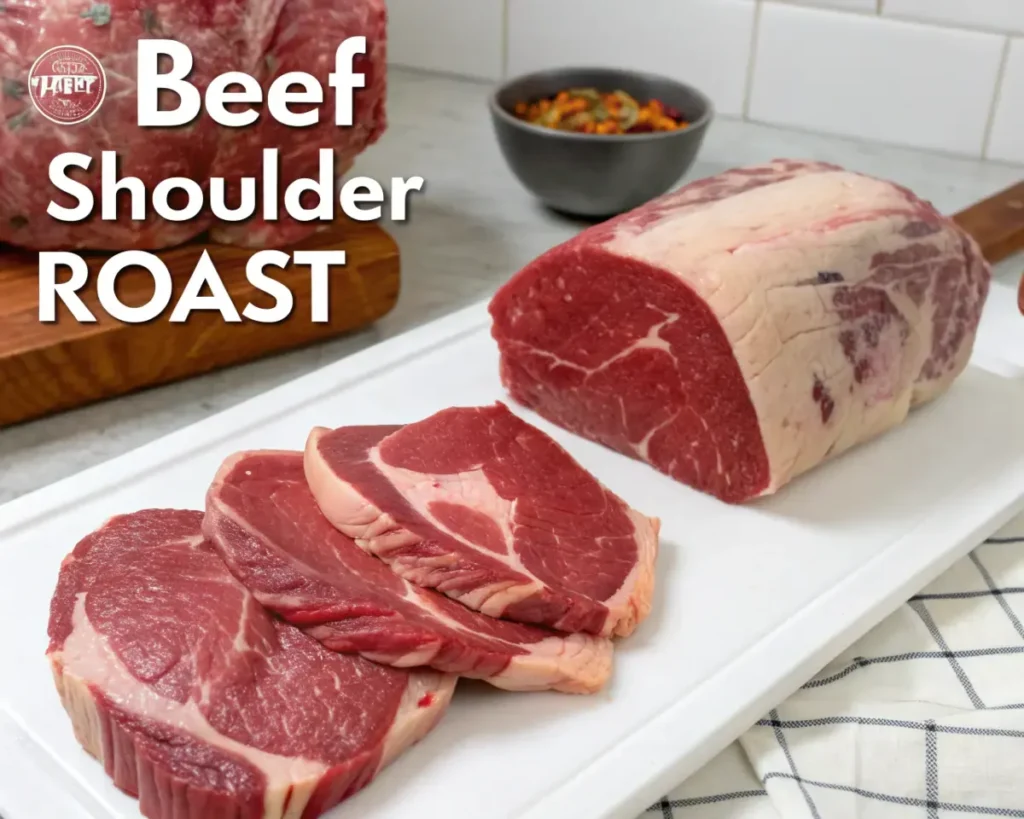
Selecting the right beef shoulder roast can make all the difference in the final dish. Whether you’re cooking for a special occasion or preparing a family meal, knowing what to look for when buying a roast ensures a better cooking experience and a tastier meal.
Factors to Consider When Buying Beef Shoulder Roast
When you’re at the butcher shop or grocery store, the first thing to consider is the size of the beef shoulder roast. This cut typically ranges from 3 to 5 pounds, making it great for feeding a group. Be sure to choose a roast that fits the number of servings you need.
Next, pay attention to the marbling. Marbling refers to the fat that runs through the meat, and a good amount of it can make your beef shoulder roast more tender and flavorful. While leaner roasts are available, they might be tougher unless cooked for longer periods. Look for a roast with a decent amount of fat for a juicy and tender result.
Understanding Beef Shoulder Roast Labels
You may also encounter different labels when shopping for a beef shoulder roast, such as “grass-fed” or “organic.” These labels can indicate different farming practices and quality levels. Grass-fed beef is typically leaner and has a distinct flavor, while organic beef is raised without synthetic hormones or antibiotics. Choosing one of these options can add a unique flavor and nutritional benefits to your dish. Ultimately, the decision depends on your preference and budget, but both options can produce a fantastic roast if cooked properly.
Troubleshooting Common Beef Shoulder Roast Issues
Even with the best recipe and ingredients, issues can sometimes arise when cooking beef shoulder roast. Don’t worry—if your roast doesn’t turn out as expected, you can troubleshoot the problem with a few simple tips.
Why Does My Beef Shoulder Roast Turn Out Tough?
One of the most common issues when cooking beef shoulder roast is that it turns out tough and chewy. This usually happens when the roast is cooked at too high of a temperature or for too short a time. To fix this, try cooking the roast slowly at a low temperature, either in a slow cooker or oven. This allows the connective tissues in the meat to break down and become tender.
Another reason for toughness is undercooking. Always check the internal temperature to ensure the roast is fully cooked. A slow and low cooking process will yield the best results, especially for cuts like the beef shoulder roast.
How to Keep Your Beef Shoulder Roast Moist
Dry beef shoulder roast is another common complaint, but it can easily be avoided. First, ensure you’re using enough moisture in your cooking method. Whether you’re braising, slow-cooking, or roasting, adding broth, wine, or even vegetables around the roast can help maintain moisture. Basting the roast periodically during cooking also helps keep it juicy. Additionally, don’t skip the resting period after cooking. Letting the roast rest for 10-15 minutes before slicing allows the juices to redistribute, ensuring a moist and tender roast.
If you’re interested in exploring more delicious recipes, check out our Nata Fruit Pudding recipe article for more fantastic meal ideas.
Beef Shoulder Roast Cooking Tips and Tricks
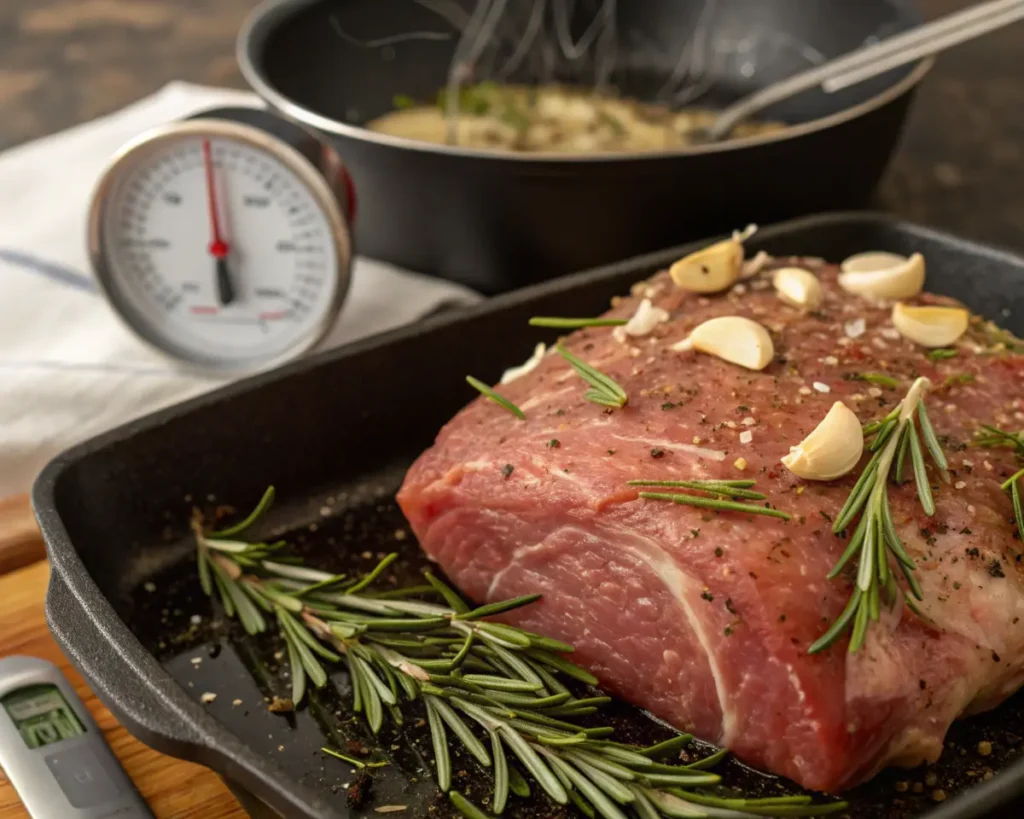
To make your beef shoulder roast truly stand out, it’s all about using the right cooking techniques. Whether you’re a seasoned pro or a beginner in the kitchen, these tips will help you achieve a perfectly cooked roast every time.
Achieving Perfect Tenderness Every Time
The key to a tender beef shoulder roast lies in cooking it low and slow. This means allowing the meat to cook for several hours at a low temperature to break down the tough fibers, making the roast tender and juicy. For oven roasting, aim for around 300°F (150°C) for several hours. If you’re using a slow cooker, low heat for 6-8 hours will do the trick. Don’t rush it—patience is key to getting that melt-in-your-mouth tenderness.
For an even more tender roast, consider searing the meat in a hot pan before cooking it. Searing locks in flavors and creates a delicious crust. After searing, let the roast rest before placing it in the oven or slow cooker. This resting time helps the meat retain its moisture.
Seasoning and Marinating for Maximum Flavor
While the beef shoulder roast has its own rich flavor, seasoning and marinating it will take it to the next level. A simple seasoning of salt, pepper, and garlic is classic, but don’t be afraid to get creative. Consider using fresh herbs like rosemary and thyme, or even a bit of balsamic vinegar for a sweet, tangy twist. For even more depth of flavor, marinate the roast overnight. The longer it sits in the marinade, the more it will absorb the flavors, resulting in a juicier, more flavorful roast.
If you prefer a spice rub, mix up some paprika, garlic powder, onion powder, and ground cumin for a smoky, savory kick. Remember, the beef shoulder roast is a large cut, so don’t be afraid to be generous with your seasonings!
Frequently Asked Questions about Beef Shoulder Roast
Cooking a beef shoulder roast might seem straightforward, but there are always a few questions that pop up along the way. Let’s answer some of the most common ones to ensure your roast turns out perfectly every time.
How Long Should You Cook Beef Shoulder Roast?
The cooking time for a beef shoulder roast depends on the method you’re using and the size of the roast. As a general rule, aim for about 20 minutes per pound in a 300°F (150°C) oven. If you’re slow-cooking, plan for 6-8 hours on low heat. To check for doneness, use a meat thermometer. For a roast that’s medium-rare, the internal temperature should be 125°F (52°C); for medium, aim for 135°F (57°C). Always allow the roast to rest for 10-15 minutes before slicing.
Can Beef Shoulder Roast Be Cooked from Frozen?
Yes, you can cook a beef shoulder roast from frozen, though it will take longer. If you’re using an oven, plan for an additional hour of cooking time. In a slow cooker, it’s best to thaw the roast first for even cooking. Cooking from frozen may not yield the same tenderness as a thawed roast, but it’s a great option when you’re short on time.
What’s the Best Way to Store Leftover Beef Shoulder Roast?
If you have leftover beef shoulder roast, store it in an airtight container in the refrigerator. It will keep for up to 3-4 days. For longer storage, you can freeze the leftovers for up to 3 months. When reheating, do so gently to avoid drying out the meat. You can reheat it in the oven, on the stovetop, or in the microwave with a bit of broth to keep it moist.
Now that you’re armed with all the knowledge about beef shoulder roast, including cooking tips, troubleshooting, and answers to your common questions, you’re ready to create your own mouthwatering meals. Enjoy experimenting with this versatile cut!
Conclusion and Final Thoughts
Cooking a beef shoulder roast can be a delightful experience, whether you’re a seasoned cook or just starting out in the kitchen. This cut of meat is incredibly versatile, offering many ways to cook it—slow-cooked, roasted, grilled, or braised—all with delicious results.
Final Cooking Tips for Beef Shoulder Roast
To recap, remember that the key to a perfect beef shoulder roast is patience. The slow cooking methods, such as using a slow cooker or roasting at a low temperature, allow the flavors to fully develop, creating a tender, juicy roast. Don’t forget to season the meat well, and consider marinating it for added flavor.
If you encounter any challenges, like toughness or dryness, don’t worry—these can be easily avoided with the right cooking techniques, such as using enough moisture and allowing the meat to rest before slicing. And if you’re ever unsure about cooking times or storage, refer to the troubleshooting section for guidance.
Embrace the Versatility of Beef Shoulder Roast
Overall, the beef shoulder roast is a great choice for a variety of dishes, from casual family dinners to elegant holiday meals. It’s affordable, flavorful, and perfect for feeding a crowd. So, whether you’re experimenting with new recipes or sticking with the classic pot roast, this cut will always deliver a satisfying meal.
Now, you’re ready to create your own beef shoulder masterpiece, armed with all the tips and tricks to make it perfect. Happy cooking!

